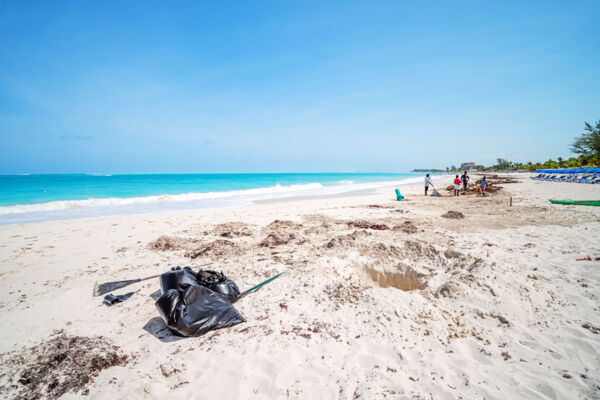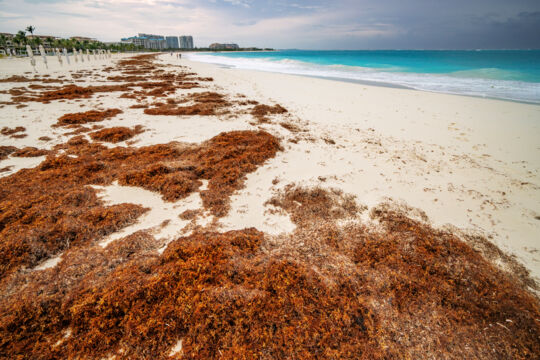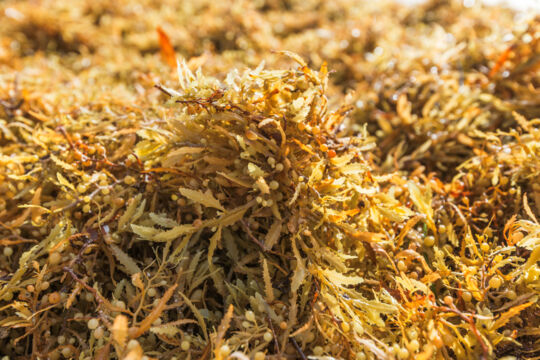Sargassum & Seaweed in the Turks & Caicos
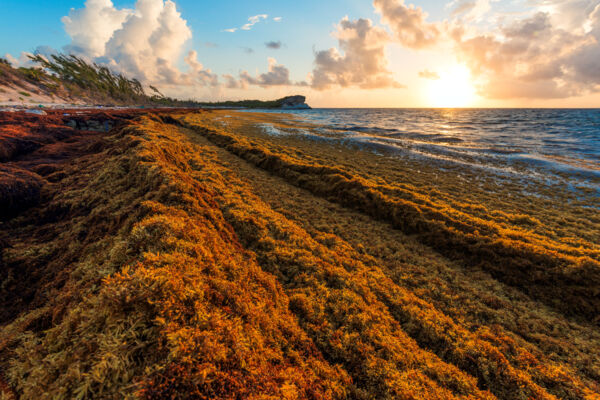
Sargassum is a yellow, reddish, or brown seaweed that washes up on some beaches. In recent years, sargassum has made headlines due to its impact and accumulation on beaches in the Caribbean, the Lucayan Archipelago, and Florida. Some island destinations, such as Barbados, have experienced huge influxes of the seaweed.
Most beaches in the Turks and Caicos are free of sargassum, notably the world-famous Grace Bay Beach.
Sargassum is a genus of macroalgae. The species that plagues some popular beaches in the Caribbean is a little different from the typical seaweed that grows on the ocean floor and reefs in that it is holopelagic (its entire life cycle occurs while floating in the open ocean). Small berry-like air bladders keep the algae buoyant.
Sargassum doesn’t pose any health risks to humans, except in extreme cases where tremendous decaying masses produce fumes with sulfur compounds that can incite respiratory issues. Only a few remote locations in the Turks and Caicos, during atypical times, have ever approached these levels.
The Turks and Caicos fortunately doesn’t often see extraordinary accumulations. The algae here is usually simply unsightly, with some unpleasant odors associated with higher concentrations.
Much of the sargassum in the tropical Atlantic originates from the Sargasso Sea, which is an area in the mid-Atlantic centered between four major ocean currents. The revolving ocean currents create a gyre, which holds sargassum, flotsam, and jetsam.
It’s thought that warmer ocean water temperatures and runoff from global agriculture fertilizer use may have caused the algae blooms in recent years.
Sargassum Season
It’s important to be aware that sargassum is largely seasonal and is most apparent during the later summer months.
Will Sargassum Affect Your Vacation?
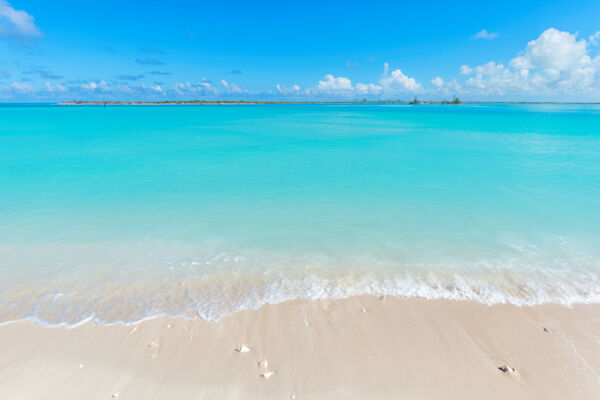
For guests staying on the main tourism island of Providenciales, the short answer is typically no. The majority of guests never notice any sargassum.
On Providenciales, the popular beaches of Grace Bay, Leeward, the Bight Beach, Taylor Bay, Sapodilla Bay, and Malcolm’s Road—and the beautiful boat cruise destinations of Half Moon Bay, Water Cay, Pine Cay, and Fort George Cay—are typically free of sargassum. At these coasts, the sand is white and the ocean water is the signature turquoise hue that the Turks and Caicos is famous for.
Three coasts on Providenciales—Long Bay Beach, Five Cays Beach, and Blue Hills Beach—can experience annoying levels of sargassum at times, yet these beaches simply don’t get a large amount of visitor traffic.
Geography largely determines if sargassum accumulates or not. Sargassum can collect on windward coasts in the Turks and Caicos, such as on much of South Caicos, Grand Turk, the eastern side of North Caicos, and the Ambergris Cays.
The Turks and Caicos has hundreds of beaches, and windward coasts where flotsam collects will often have at least some sargassum.
Environmental Impact
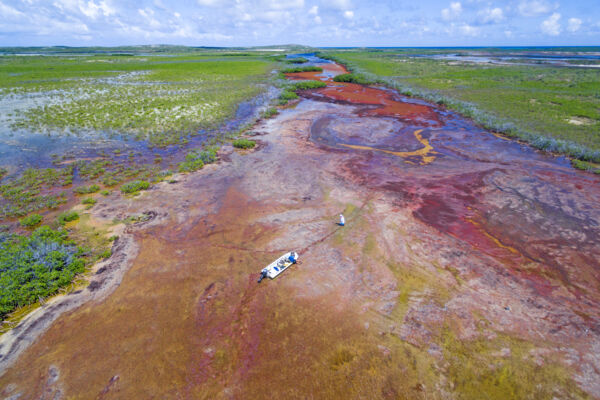
Sargassum can definitely impact the local environment in ways deemed both good and bad. It’s important to understand that nature is constantly changing, and such change can be especially rapid in a sandy coastal environment such as the Turks and Caicos.
Just because something is unsightly, that doesn’t mean it’s unnatural. Algae and sargassum blooms happen in nature for countless reasons, and sargassum drifts have been recorded in the Americas since the time of early European explorers like Columbus.
Beach Enrichment
Under normal weather conditions and in moderate quantities, sargassum can help beach growth by trapping sand and encouraging beach accretion.
Eutrophication
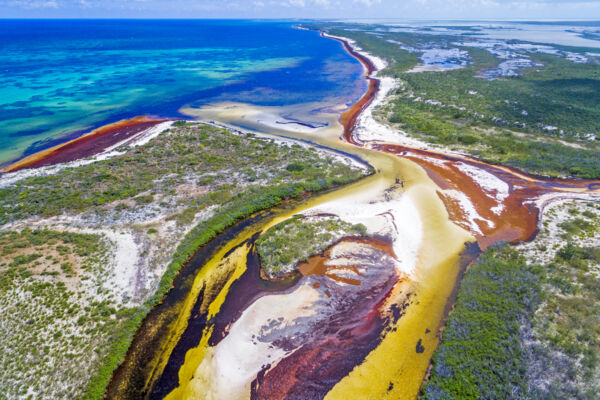
One of the extreme cases of sargassum accumulation in the Turks and Caicos took place in the channels that separate the small cays between South Caicos and East Caicos. The northernmost of the channels tends to get the worst of sargassum in the country, and can be completely choked with the algae.
Eutrophication—which refers to nutrient enrichment of water that leads to excessive marine vegetation growth and the subsequent deoxygenation of water, resulting in die-offs of larger organisms—can be a serious side effect of sargassum in smaller waterways.
There are concerns that eutrophication could be an issue in rare cases at a few specific wetland locations in the Turks and Caicos.
Sargassum Removal and Beach Cleaning
As is often the case, having the right tool for the job greatly increases productivity.
In most cases, a lightweight utility tractor with a beach rake implement is the best equipment for removing sargassum from the beach. A few resorts in the Turks and Caicos have such equipment, and rake the beach as conditions dictate.
When abnormal weather causes sargassum buildup on coasts that normally don’t experience accumulation, the algae is typically raked and gathered by hand.
Hurricanes and tropical depressions often act as a flush for waterways and coasts, as the winds and storm surge greatly increase water flow in the channels and inlets.
Heavy equipment, such as backhoes and skid steers, are usually the wrong equipment for cleaning sargassum, and can cause additional beach damage.

